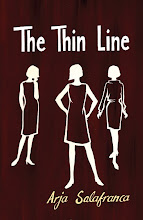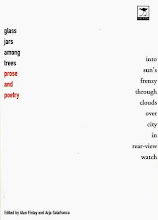"I’d sell my computer before I’d sell my children. But the kids had better watch their step. When have the children helped me meet a deadline? When has the computer dragged in a dead cat it found in the backyard?”
James Fallows is writing in the Atlantic Monthly – in 1982. From the day that the processor technology SOL-20 entered his life in 1979, he’s been a fan of the PC. Gone for Fallows were the days of laboriously typing and retyping on a typewriter, or calling in a dreaded secretary to do the work before dispatching said copy to hungry editors.
And so begins a delightful essay in which Fallows explores what a computer means to him in those long ago days before mouse pointers were developed, WYSIWYG was still a term to be invented, and an eye-friendly screen had flashing green letters instead of white ones, against a black background. Fallows also recounts his difficulties in getting software for his machine, although he didn’t call it software then, and of the difficulties of saving his work. After all, his machine only had a 48K memory. So there’s some complicated stuff with tape before he discovers floppy discs.
But this is an ode to the ease that computers introduced into our lives, especially writers who had been reduced to numerous retypes or using wadges of thick Tippex everywhere. You’d then Photostat the pages so that you couldn’t see the tippex, but sometimes you didn’t quite get the lines matched up, but this was acceptable, sort of. Nobody really expected that copy could come out of a laser machine in crisp, evenly matched lines.
Reading Fallows’s article, which is archived online, is like stepping back in time. I wasn’t battling with a new PC in 1982; I was nine and writing imitation Enid Blyton stories. I had an old, rusty, manual typewriter which my grandmother had no more use for. You bashed the keys with all the strength of a nine-year old’s fingers, and you created an exclamation mark with a full stop and an apostrophe, but never mind. This was real writing – real writers used typewriters, not blue Bic pens. Word processors were out there – and local women’s mags of the time had short-story writing competitions in which the prize was often one of these beauties.
You saw the text appearing on a little grey wedge of screen, and you could edit as you went along or something like that. I don’t know – I only graduated to an electric typewriter. PCs were a long way off. My mother and I did try to buy one when I entered university but we ran out of the Dion store. What programs did we want to run? the salesman asked. Programs? What on earth were programs? The man looked bemused.
I carried on with my Tippex and photostatting techniques. They worked. Sort of. When a publisher of short stories needed an electronic copy of a story I had to go to a special shop that retyped my story and put it on a floppy – well before the days of email.
I did finally get introduced to computers at a community newspaper, in my first job. We used computers that had been born in the late 1970s, had flashing white letters on black and required complicated manoeuvres. No hitting a button on your tool bar to indicate italics, it was alt-spacedelete or something that made you work the grey matter in your head. Sometime later there was internal mail, precursor to email, and of course we journalists all laid out the paper with cutting-edge technology, using PageMaker. Here, finally, was WYSIWYG. Hell, I even learnt to pronounce the thing.
But you never forget your first PC – I had a grand sum of 8MBs of speed and 1 gig of memory. Friends marvelled. A gig! A gig indeed, with a clunky drive to store info on floppies, and a CD drive to use with the new CD-Roms. Okay, I couldn’t write and play music at the same time – on the PC – but this was a small matter.
My photographer uncle remembers his first, also a clunky machine, used to track his burgeoning freelance business. But you couldn’t actually see images on it. Quite how that worked is beyond me now. And then there was email, and life changed unrecognisably for all of us. In my first job I’d receive freelance submissions by fax and have to type them in (and I have never discovered all 10 of my fingers on the keyboard). Photos were taken, printed, delivered. To get them in the paper the scanner took them to a big black room with a big black camera-type thing that “photographed” them for print.
And that was only last decade. I give eternal thanks for computers, email, digital photos and whatever else they’re going to invent to make our lives easier. Can’t wait for the next 10 years...
See James Fallows’article at www.theatlantic.com/doc/198207/fallowscomputer
(Published in Sunday Independent, July 2008)
Tuesday, December 23, 2008
Subscribe to:
Post Comments (Atom)





.jpg)

No comments:
Post a Comment